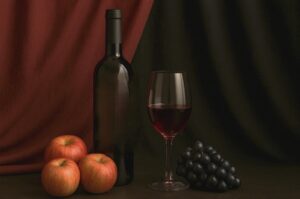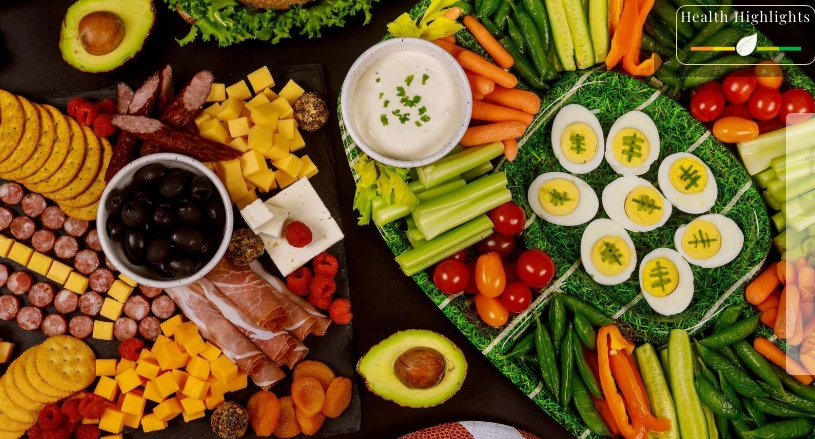
Safe Food Storage: A Comprehensive Guide
Proper food storage not only guarantees the freshness and safety of your meals but also helps you be more efficient in the kitchen and reduce food waste. Organising the fridge, caring for dry and perishable ingredients, and managing leftovers are key components for maintaining an efficient and sustainable kitchen. By mastering the art of food storage, you’ll enjoy delicious meals and contribute to a more sustainable and mindful way of living.
Get ready to take a step toward a more organised and effective kitchen! With these practices, you’ll not only save money but also help reduce food waste, an important step toward sustainability.
Proper food storage is essential for preserving freshness, flavour, and nutritional value. Storing food correctly involves knowing the optimal temperature and humidity conditions for each type of food, whether in the refrigerator, pantry, or freezer. Refrigerating perishable products such as dairy, meat, and fresh vegetables at specific temperatures helps prevent bacterial growth and extends their shelf life.
Proper food storage is a fundamental kitchen skill that can make the difference between wasting food and enjoying delicious meals. In this article, we’ll guide you through a comprehensive food storage strategy, from organizing your pantry and refrigerator to techniques for maintaining food freshness and safety. You’ll learn how to avoid waste, save money, and ensure your ingredients and prepared dishes stay in top condition. Get ready to master the art of food storage and elevate your kitchen to the next level!
Food Store Organisation
The pantry or Food Store is the heart of your kitchen, and keeping it organised is essential.
Remove Expired Items: Start by reviewing and discarding expired or spoiled food. This ensures that the products in your pantry are in good condition.
Sort by Categories: Classify foods on labeled shelves according to categories (cans, grains, spices, etc.) to find what you need faster.
Use Transparent Containers: Transparent storage containers make it easy to see the contents, which is especially useful for dry ingredients like flour, sugar, and rice.
Food Rotation: Practice the “first in, first out” rule to use older items first and avoid spoilage.
Refrigerator Organization
The refrigerator is vital for keeping perishable foods fresh. Learn to:
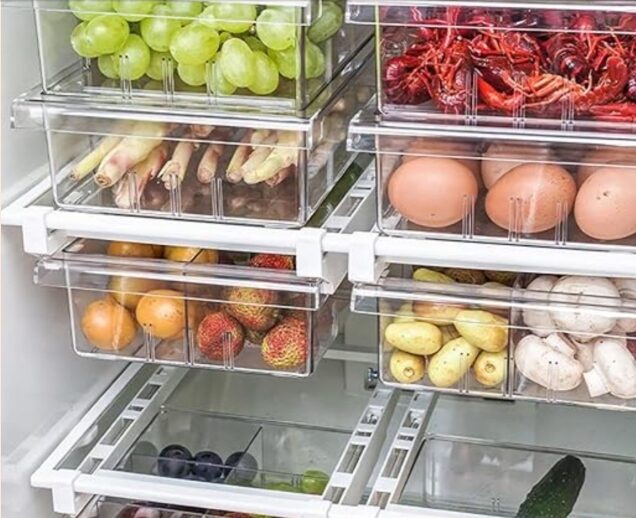
Fridge Zones: Store food according to different temperature zones. The top is usually warmer, the middle is ideal for dairy and proteins, and the door is the warmest part.
Wrapped and Labeled Foods: Properly wrap foods and label containers with expiration dates to keep track. This prevents food from mixing and helps maintain freshness.
Humidity Control: Use adjustable humidity drawers for fruits and vegetables. Some foods require more humidity than others, and these drawers allow for adjustments.
Food Safety: Know safe storage temperatures (usually between 1°C and 4°C) and avoid cross-contamination by separating raw and cooked foods.
Storing Dry Ingredients
Dry ingredients like grains, flours, and spices also require care. Learn to:
Airtight Containers: Use airtight containers to protect ingredients from moisture and pests. This is especially important to prevent infestations in flour and rice.
Labelling and Purchase Date: Label containers with the name and purchase date for effective tracking. This helps you know when to replace an ingredient.
Pest Control: Regularly inspect dry ingredients for signs of pests. Discard affected items if you find infestations.
Storing Perishable Products
Fruits, vegetables, and dairy products require special attention. Learn to:
Product Separation: Store fruits and vegetables in separate drawers to avoid accelerated ripening. This helps extend the freshness of both groups.
Storage Bags: Use specific storage bags for fruits and vegetables. These bags allow proper airflow and prevent excess moisture from causing spoilage.
Humidity Control: Adjust humidity in the vegetable drawer based on its contents. For example, leafy greens need high humidity, while fruits require less.
Dairy Product Rotation: Use the “first in, first out” technique for dairy products. This ensures you consume older items first.
Storing Leftovers and Prepared Meals
Leftovers and prepared meals deserve a place in your storage strategy.
Quick Cooling: Cool prepared meals quickly before storing them in the fridge to prevent staying at dangerous temperatures for too long.
Freezer-Safe Containers: Use freezer-safe containers to store meals you won’t consume immediately. Be sure to label them with the preparation date.
Labeling: Label leftovers with the preparation date and content to avoid confusion. Knowing what’s in each container helps meal planning.
Avoiding Food Waste
Reducing food waste is crucial for sustainability:
Meal Planning: Plan meals to use ingredients before they expire. This reduces the need to throw food away.
Creative Reuse: Find creative ways to use ingredients and leftovers in new recipes. For example, leftover vegetables can become a stir-fry or soup.
Composting: If you have food that can no longer be consumed, consider composting as a way to reduce waste. Composting is an environmentally friendly practice.
Original article : Safe Food Storage: A Comprehensive Guidehttps://www.mentta.com/
Wine and Storing Leftover drinks
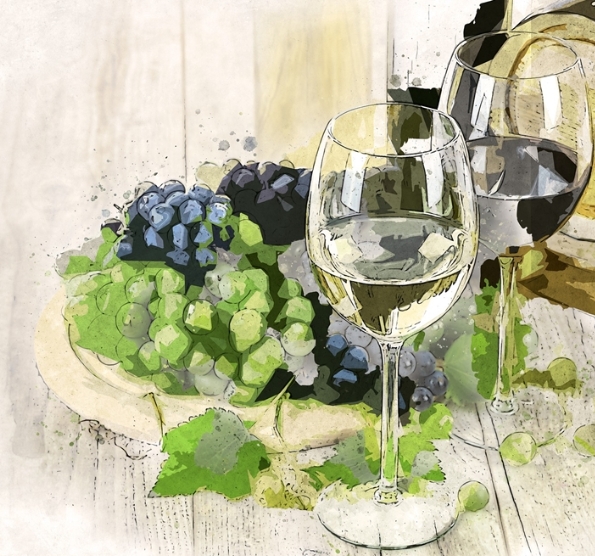
Storing Fruit Juices and Alcoholic Beverages in the Fridge or Freezer
Fruit Juices:
Refrigeration: Once opened, fruit juices should always be stored in the refrigerator at temperatures between 1°C and 4°C. Keeping them cold slows down spoilage and helps maintain their flavor and nutritional content.
Storage Tips: Store juices in their original containers if they can be tightly sealed. If not, transfer the juice to airtight glass or plastic containers to minimize exposure to air, which can degrade the quality.
Freezing: Freezing fruit juice is possible but may slightly alter the texture and taste. Leave some space in the container as liquids expand when frozen. Thaw in the fridge when ready to use.
Wine:
Refrigeration: Opened bottles of white, rosé, and sparkling wine should be stored in the refrigerator and consumed within 3 to 5 days. Red wine can also be refrigerated after opening, though it’s best to let it warm up slightly before serving.
Storage Tips: Use a wine stopper or vacuum pump to limit air exposure and extend the wine’s life. Sparkling wines benefit from specialized stoppers to maintain fizz.
Freezing: Freezing wine is generally not recommended for drinking but can be done for cooking purposes. Pour the wine into ice cube trays for convenient use in recipes.
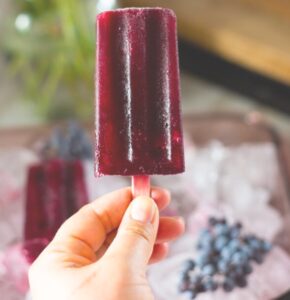
Beer:
Refrigeration: Opened beer should be refrigerated immediately and consumed as soon as possible, typically within a day, as it quickly loses carbonation and flavor.
Storage Tips: Keep beer in its original container if possible and tightly reseal bottles.
Freezing: Freezing beer is not recommended, as it will cause the beer to lose its carbonation and potentially alter the flavor. Additionally, the liquid expansion can cause cans or bottles to burst.
Good or Bad Practice?
Refrigeration: Storing opened fruit juices and alcoholic beverages in the fridge is a good practice to extend their shelf life and maintain quality.
Freezing: Freezing juices can be practical but may affect texture, while freezing wine is acceptable for cooking but not for drinking. Freezing beer is highly discouraged due to carbonation loss and risk of container rupture.
In general, proper sealing and refrigeration are key to preserving the quality of these beverages after opening.





